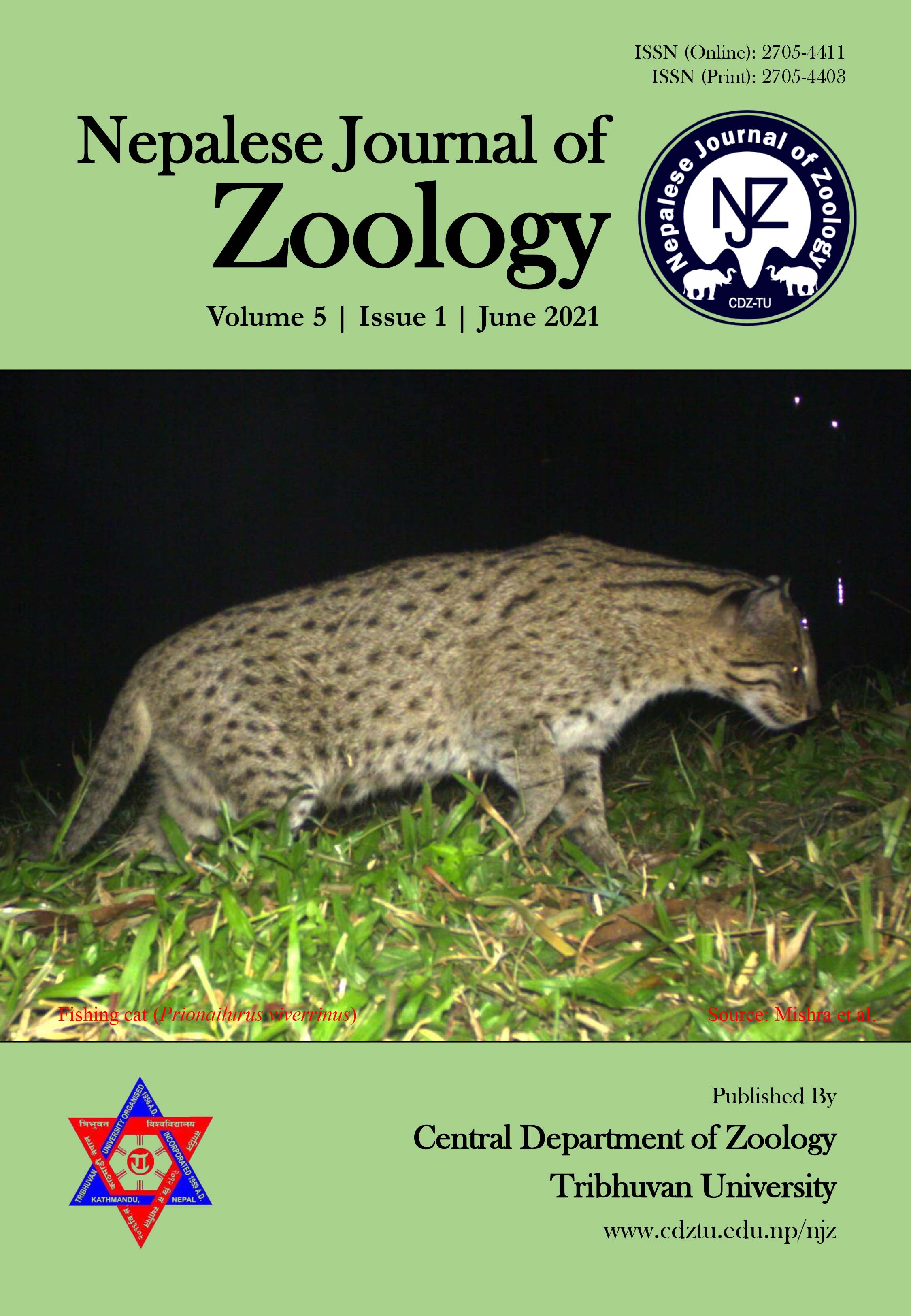Prevalence of intestinal parasites among children attending outpatient department of Kanti Children’s Hospital, Kathmandu, Nepal
DOI:
https://doi.org/10.3126/njz.v5i1.38281Keywords:
Children, Entamoeba, Hygiene, Intestinal parasites, NematodesAbstract
Intestinal parasitic infection is one of the main causes of morbidity and mortality in developing countries, especially among children. Even minimum infection of parasites in children may have negative effects on growth, iron deficiency anemia, perceiving function, and impaired cognition. The main objective of this study was to determine the prevalence of intestinal parasites and associated factors among the children attending the Outpatient Department of Kanti Children’s Hospital, Kathmandu for various illnesses. The research was carried out from March to May 2018. A total of 300 fresh stool samples were collected in clean, dry and screw-capped plastic vials and were studied for the presence of intestinal parasites using the direct smear and concentration methods. Children or their parents were interviewed using standard questionnaires. The overall prevalence of intestinal parasites was 25.67%. The protozoan infestation was found in 22.67% of cases, while helminthic infestation was found only in 3% of cases. No double infestation was detected. The predominant parasite was Entamoeba histolytica (14%) followed by Giardia lamblia (8. 67%). The prevalence among female (32.11%) was greater than male (21.99%). The infection was found higher in low age of children, using underground water as a source of drinking water and hardly cut their nail in a regular fashion, whereas those children followed regular hand washing habit, defecation in toilet, parent’s occupation, use of antihelminthic drugs and treatment method had low infection of intestinal parasitic infection. All these evidences have shown that there should be an effective implementation of intervention activities to control and cure the spread of parasites associated infections among children.
Downloads
Downloads
Published
How to Cite
Issue
Section
License
This license enables reusers to distribute, remix, adapt, and build upon the material in any medium or format for noncommercial purposes only, and only so long as attribution is given to the creator.

